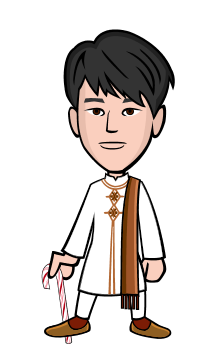"Roma è la capitale della storia, della cultura, della religione, Roma è l'Italia".
"Rome is the capital of history, culture, religion; Rome is Italy."(in english)
Uto Ughi, violinist.

(image source: google.es)
Rome is the capital of the Italy and is well known to the world because it is an ancient city, full of history, monuments, churches and artworks. Today Rome is a big city: it has about 3 million inhabitants. These all people are not Roman, in the city live many people from northern and southern Italy and there are also many foreign students and workers.
Rome's Geographic Location :-

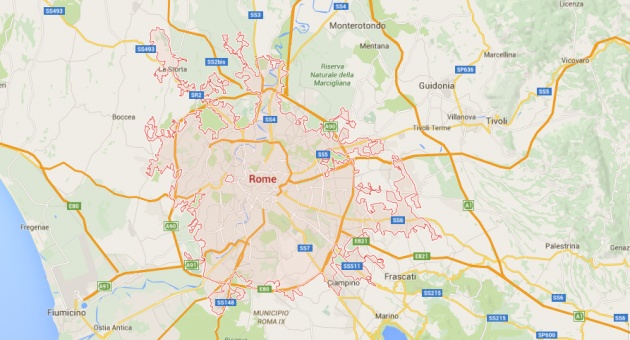
(images source: Google.es/maps/rome-italy... screenshot)
Italy is located in the Italian Peninsula or Apennine Peninsula in southern Europe. On the map it is easy to locate by its shape, the boot. Limits on the north ridge of the Alps, on the west by the Tyrrhenian Sea; east its shores are washed by the Adriatic and Ionian seas, and to the south by the Mediterranean Sea. The geography of Italy presents fertile river valleys. The most important of them are the Tiber and the Po.

(image source: google.es)
In ancient times, the northern Alpine were considered the northern boundary of Italy, while the Po plain, the current Lombardy was part of Glaia Cisalpina. The valleys of the Alps invited the Italians to cross the Alps. The island of Sicily made link between all peoples and all civilizations of the Mediterranean basin.
A few kilometers from Rome is the sea, but there is no port. The port is in Civitavecchia, a town about 70 kilometers away. Near Rome, in Fiumicino, is a major international airport, the airport "Leonardo da Vinci".
Rome's internation airport "leonardo da Vinci - Fiumicino :-

(image source: google.es)
In the town is also a very large train station, "Termini Station", and then there are many cinemas, theaters, bars, restaurants, shops and nightclubs.
Rome's train station " Termini station or Rome Termini" Pictures :-

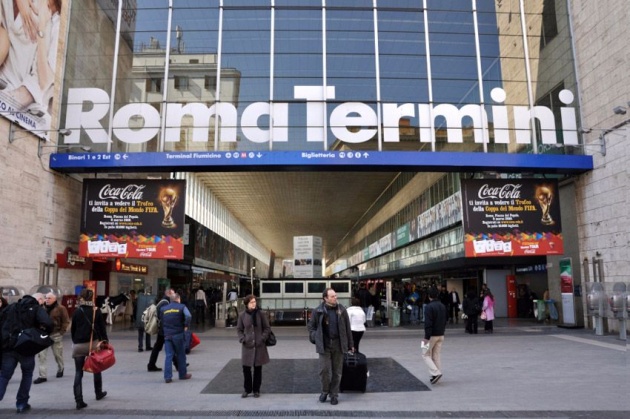
(images source: google.es)
Rome: The history of the culture :-
Italy in prehistoric times was inhabited by the Ligurians. Around 1200 BC, the peninsula was invaded by the Italians, people of Indo-European origin, had a very primitive culture. They are including noted Latinos, who settled on the fertile banks of the river Tiber, which was given the name of Lazio.
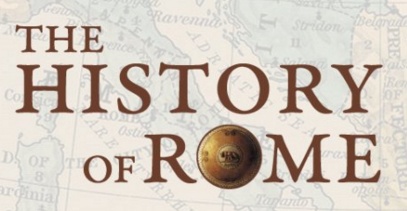
(image source: google.es)
In the tenth century, the Etruscan people not Indo-European, coming perhaps from Asia Minor, arrived by sea to Italy and settled in Eturia, the current Tuscany, had a vast culture, lived in great cities, had developed cultivation techniques and large maritime trade.
From the eighth century the Greeks founded colonies in southern Italy and Sicily, the Magna Grecia. In the western part of Sicily Phoenician colonies, which were placed under the protection of Carthage, prosperous Phoenician city in North Africa were established.
The occupants of ancient Italy belonged to three different populations: Italic, Etruscan and Greek. The Italians, of Indo-European origin, had a very primitive culture. Including noted Latinos, who settled on the fertile banks of the Tiber River.
The Etruscans had a rich culture, lived in great cities, had developed cultivation techniques and large maritime trade.
Here is a video for "The History of Rome, the Holy City (Documentary)." (video source: youtube.com) :-
Rome: As a political organization :-
In its political evolution, Rome went through three stages: Monarchy, Republic and Empire.
The Monarchy lasted from 753 to 509 BC During that period, Rome was under the power of Etruscan kings. They were advised by the Senate, whose members were appointed by the king. The Etruscan domination was not accepted by the Latins, and in 509 BC dethrone the last Etruscan king, establishing the Republic form of government. Tarquin despotism made the title of Rex, king, forever abominable outside Rome.
The basic institution of modern Roman society is the family, consisting of father, mother, children, direct relatives, clients, slaves and goods. The population was divided into two groups or orders: patricians and plebeians.
During the Republic (509 to 531 BC) the power was in the hands of an oligarchy (government by the few, who usually belong to the aristocracy). The position of king was removed and its functions are fulfilled two consuls, elected every year. In the days of the Republic, the Senate was the supreme organ of government, and consisted of the heads of patrician families (members of the aristocracy). The position of king was removed and its functions are fulfilled two consuls, elected every year. In toempos of the Republic, the Senate was the supreme organ of government, and consisted of the heads of patrician families (members of the aristocracy)
Commoners (free men who had belonged to the patricians and political rights), the mob was made up of elements of diverse origin and was formed had already begun when the political and social life of Rome. Since they had pater outside the populus. They could not marry patricians. They were increasing in number and wealth, and began to demand more equal treatment. They were the ones who made up the majority of the army, which depended on the patricians to defend against external threats. This important letter in his favor, and after many pressures and a rebellion, the plebeians achieved some of its objectives, such as:
-
- Right to elect the consuls and other magistrates.
-
- Right to vote in the bills and declare war.
-
- Taxes right to choose and Elections tribunes of the people entitled to help and veto against court decisions and measures of judges.
-
- To marry patricians.
-
- To be elected censors, quaestors, magistrates, mayors, curiles, consulate.
-
- In the tribunes of the people, be seated in the Senate.
-
- Right to Roman Citizenship, etc.

(image source: google.es)
Here is video for Rome's political aspects and its history. (video source: youtube.com) :-
The capital is not only a city of monuments, but a living city that offers visitors a multitude of cultural events, exhibitions from the permanent pitches that fill many museums with works of art from antiquity to the present day. For example the Doria Pamphilj Gallery, National Gallery of Modern Art, Capitoline Museums and many more.
Here is the map for the place I am going to brief you about :-
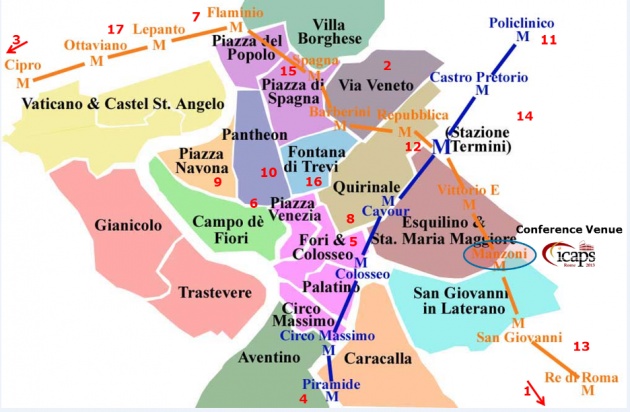 (image source: google.es)
(image source: google.es)
Rome is one of the oldest cities in the world with so many monuments to testify a glorious past, and there are many places to visit. Here are some of the best places to visit in Rome.
COLOSSEO - Colosseum :-
Symbol of the eternal city Colosseum is a unique monument of the history of imperial Rome, it is one of the most visited tourist attractions in the world. It is the largest amphitheater ever built.
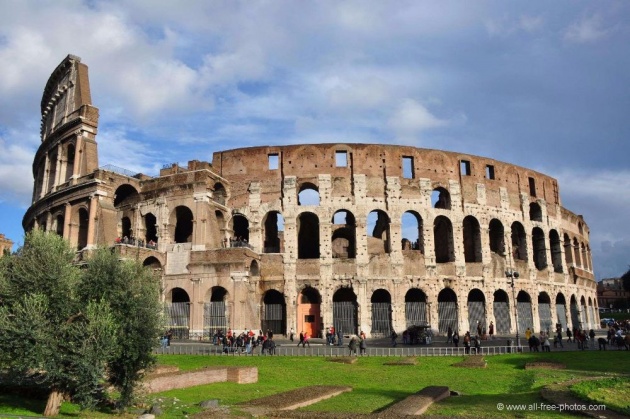
(image source: google.es)
The best time to visit the Colosseum is the early afternoon, when the sun starts to go down, illuminating the stone in particular offering a show within the show.
The Colosseum is the symbol not only of Rome and Italy, but the power of an entire Empire where lions and gladiators were facing in front of hundreds of people; the amphitheater in fact had 50,000 seats arranged in eighty rows of bleachers.
His real name is Flavian Amphitheatre, the dynasty of emperors who wanted its construction, while the Colosseum comes from a statue, the Colossus of Nero, who was near and that has not been preserved.
It was built east of the Roman Forum from 70 AD and 72 AD under the mandate of the emperor Vespasian and was completed in 80 AD under the Empire of Titus; It was finally changed during the reign of Domitian. It was used for nearly 500 years and the last games were celebrated in the sixth century.
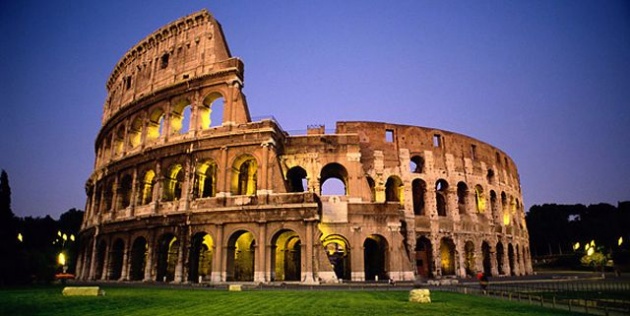

(images source: google.es)
Although the structure is seriously damaged, mainly because of the earthquakes, the Colosseum has always been regarded as the greatest symbol of Imperial Rome, as well as the best preserved example of Roman architecture. On July 7, 2007 it was recognized as one of the new seven wonders of the modern world.
It is a huge oval-shaped building, 189 meters long, 156 meters wide, 48 meters high and with a period of 524 meters.
Here is a video for full view of Colosseum. (video source: youtube.com)
Basilica di San Clemente - Basilica of San Clemente :-
Not far from the Colosseum, the Basilica of San Clemente is not just a simple Roman church, it one of the greatest witnesses to the Christian history of Rome. In the fourth century AD, here it was built a church on a residential building of the first century, beside which stood a pagan temple dedicated to Mithras (the sun god). In its dungeons you can admire the frescoes of the ninth century. In the same century it was built a new church, the current one, characterized by the Chapel of St. Catherine of Alexandria, the mosaic of the apse and frescoes by Masolino da Panicale, a Tuscan painter of the Renaissance.
Here are some pictures for Basilica di San Clemente :-
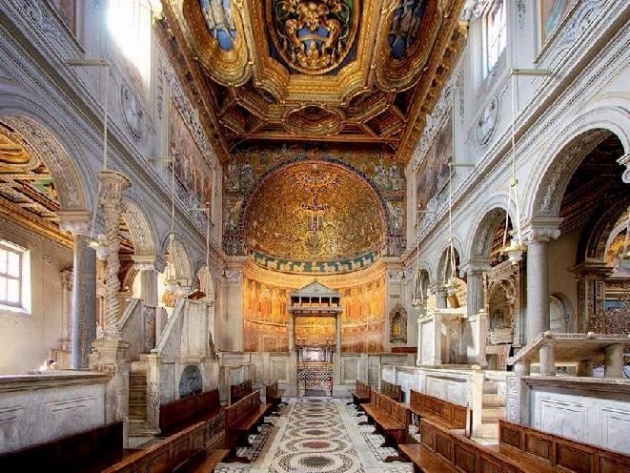
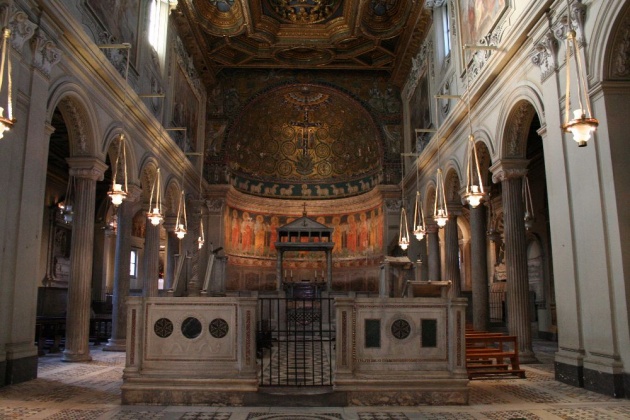
(images source: google.es)
Here is a video also in which you will be able to see and learn all about Basilica of San Clemente. (Video source: youtube.com) :-
Pantheon :-
Temple of excellence, the Pantheon is a must-see landmark for those visiting the capital.
The Pantheon ("Temple of all the gods") is a building of ancient Rome, built as a temple dedicated to the gods of all religions. The Romans call it a friendly Rotonna ("la Rotonda"), named after the square outside. The word Pantheon is in effect a loan greek that the Italian language has maintained through the Latin.
Once inside, everyone is with an eye upwards to admire the oculus, the eye from dimeter of 9 meters from where sunlight penetrates. The eye is a hole in the open, the floor is slightly concave shape with an opening at the center drain. The building was later converted into a Christian church (S. Maria Rotonda) in 609 and this helped to save it from destruction. It is the only Roman building that still keeps the marble facing, mosaics and stucco; the huge bronze doors (7m high) are the largest among the Roman gates remained.
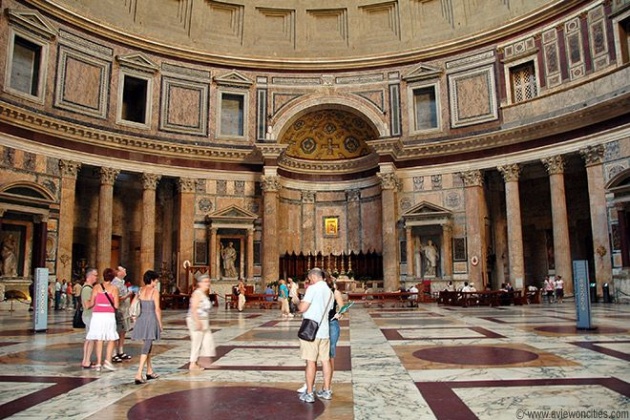
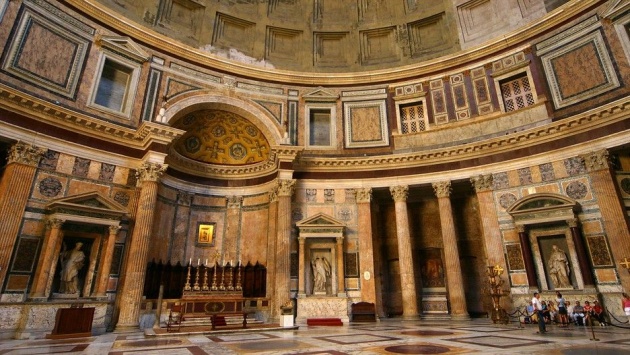
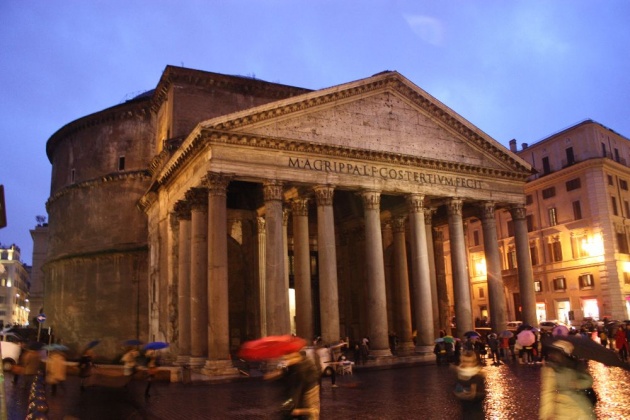
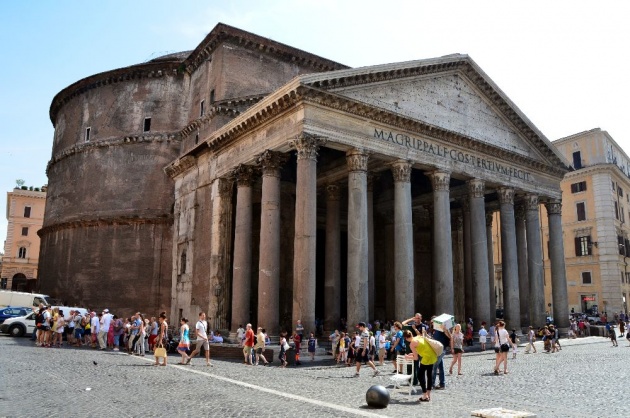
(image source: google.es)
The Tomb of the Italian Royal Pantheon is beautiful to visit during the day, when the light cone illuminates the marbles, or in the evening when the profile of its stone is delineated by the night lights of the city. It is a place of worship.
Piazza della Rotonda offers many restaurants and bars to dine or have a drink, there's even a McDonald's for the little ones and many artisan shops where to buy original souvenirs.
Altare della Patria - Altar of the Nation :-
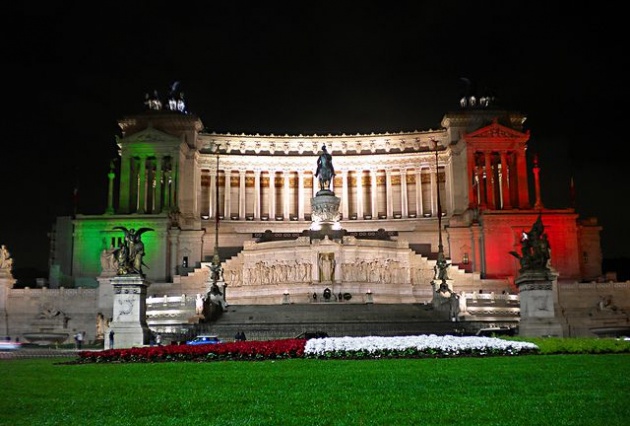
(image source:google.es)
Altar of the Nation is one of the most represented and also one of the latest monuments of Rome. Not the result of an ancient architecture, but a project that began in 1878. The monument is dedicated to Vittorio Emanuele II, the first king of united Italy. The official name of the monument is the great Victorian; the Altar of the Fatherland is in fact the top of the staircase, and the best known of the complex, home of the 'Unknown Soldier'. The are the statues of the Italian regions, corresponding to the columns and also some Italian cities, made famous by the story. The statues are created in particular to represent the values of the Italian homeland, namely: Thought, Action, Sacrifice, Law, Strength and Concord.
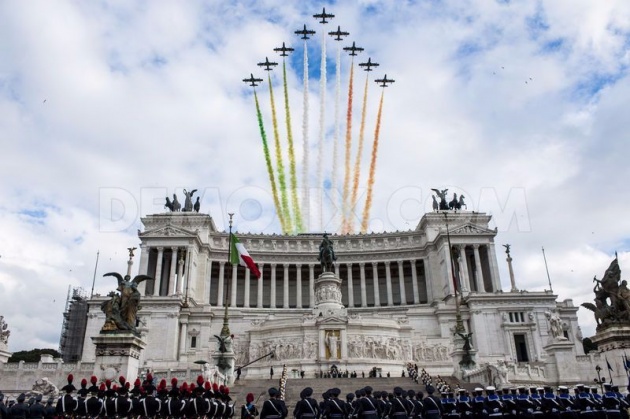
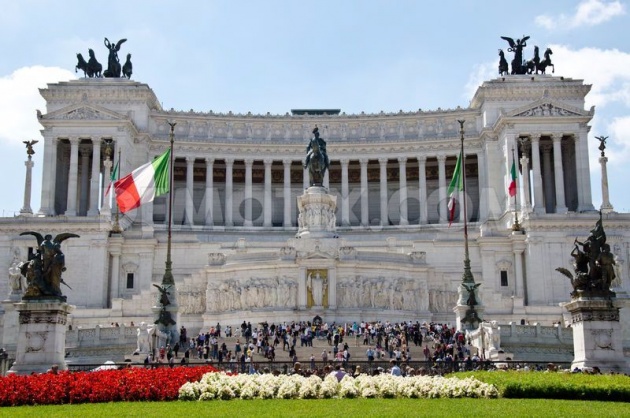
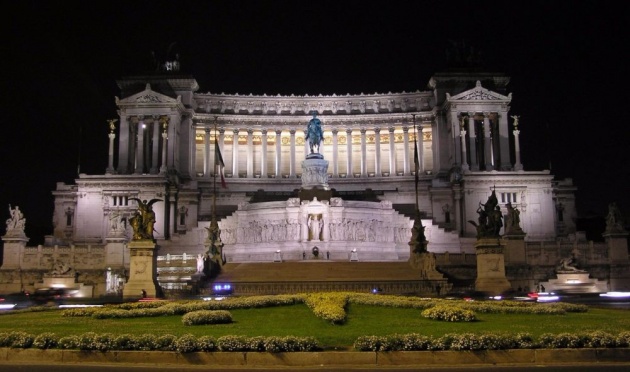
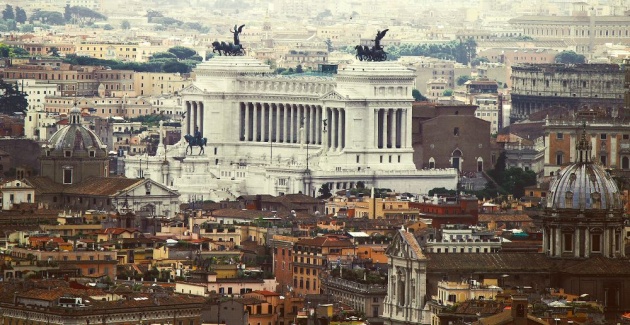

(images source: google.es)
Here is video for "Altar of the Fatherland, Rome, Italy." (vide source: youtube.com) :-
Terme di Caracalla - Caracalla's thermal baths :-
The Baths of Caracalla are one of the largest and best preserved ancient thermal complex. Today surrounded by trees and a calm atmosphere. Think of how much you could see the frenzy of an extension of 10 hectares of land which could accommodate 1,600 people and also included workshops, gardens, libraries and sports equipment. The Caracalla's thermal baths were probably opened in 216 A.D.
They were built in the southern part of the city. The Roman historian Elio Spartianus author of several biographies of Roman emperors and military, informs in his "Life of Caracalla," us that the emperor built "Thermas eximias et magnificentissimas". Like him, another author of the time, Silvio Polemio cites the Baths of Caracalla as one of the seven wonders of Rome, famous for the richness of their decoration and the works that adorned. The ruins of the baths, which are still kept in the considerable height of over thirty meters in many points, give us today the idea of the grandeur of the spa complex. The baths were abandoned after the sixth century as a result of the siege of Rome by Vitges Goths.
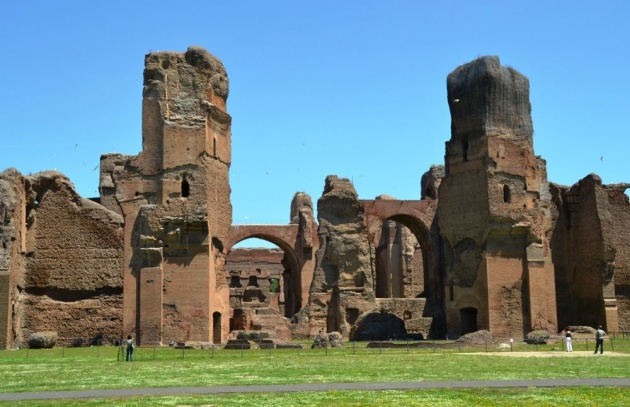
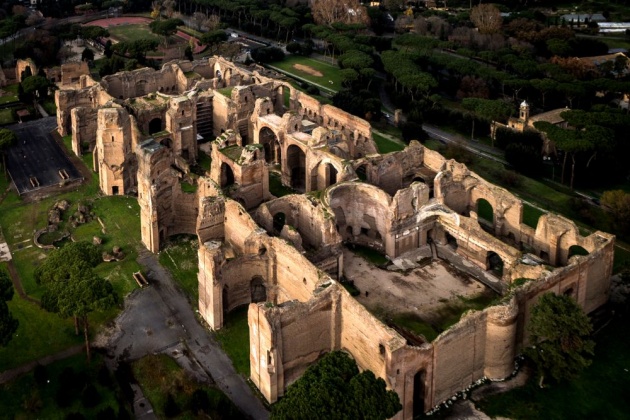
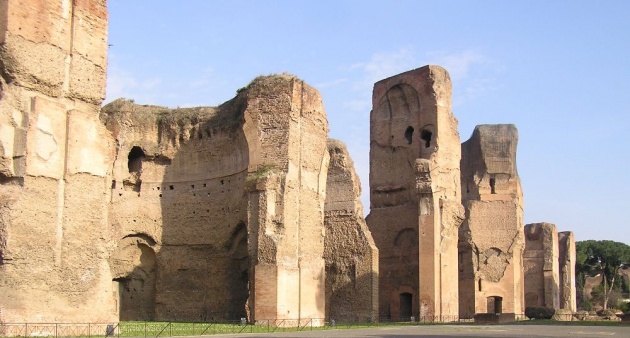

(images source: google.es)
Here is a video for "Baths of Caracalla, Rome" (video source: youtube.com) :-
Basilica di Santa Maria Maggiore - Basilica of Santa Maria Maggiore :-
The great basilica of Santa Maria Maggiore was built by Pope Liberius in 358 BC and therefore also known as the Liberian Basilica. The basilica is one of the four main churches of Papal Rome (along with St. John Lateran, St. Peter, St. Paul Outside the Walls) and especially appreciates for the mosaics of the central nave, known in the coffered ceiling. In the church houses the remains of the great architect Gian Lorenzo Bernini. Basilica di San Giovanni in Laterano - Basilica of St. John Lateran
This church, also known as Archbasilica Lateran is the cathedral of Rome, the official ecclesiastical seat of the Pope and the oldest church in the West, mother of all churches of Rome and the world. The original structure was built in the fourth century AD by the Emperor Constantine and was rebuilt several times. The current building is characterized by the eighteenth-century façade by Alessandro Galilei, which has fifteen large statues of Jesus , John the Baptist and John the Evangelist and the 12 doctors of the church. Within walking distance, there are the Holy Steps, which traditionally hosts the 28 marble steps that once belonged to the villa of Pontius Pilate in Jerusalem. According to Christian tradition, these same steps were trampled by the day when Jesus was brought before Pilate.

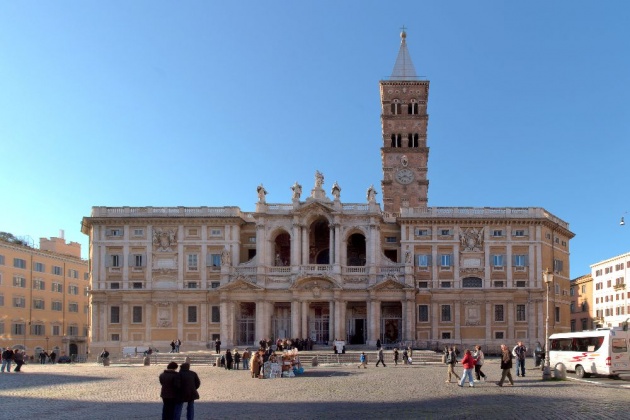
(images source; google.es)
Basilica di San Pietro – Cappella Sistina - St. Peter's Basilica - Sistine Chapel :-
Known around the world, the Basilica of St. Peter is the symbol of Christianity. In the center of the square is the colonnade in an almost symbolic gesture to embrace the pilgrims visiting the Basilica. Surpassing the white ring depicted around the perimeter you enter in the Vatican City. 284 marble columns surrounding the square overlap creating a single row in perfect line, proof of the genius of Bernini. High up on the facade of the Basilica are the 140 statues of saints that stand as witnesses of Christianity. Inside the Basilica of St. Peter's dome, we see the universal beauty effect of colors, images and mysticism that can not be told with words.

(image source: google.es)
Piazza Novana - Novana square :-
Piazza Navona is one of the most beautiful and representative squares of Rome and it is always crowded with tourists. The square is surrounded by a host of elegant palaces such as those of the Embassy of Brazil.
The large stadium, which still retains its place in the current elongated, measuring 275 meters long and 106 meters wide, has a capacity of 30,000 spectators. Like many other monuments of antiquity, the architectural structures of the "Circus Agonis" suffered the ravages of time.
It is frequented in every season, especially in December with the typical stalls of Christmas items until January 6 day for the Romans of the traditional walk to Piazza Navona.

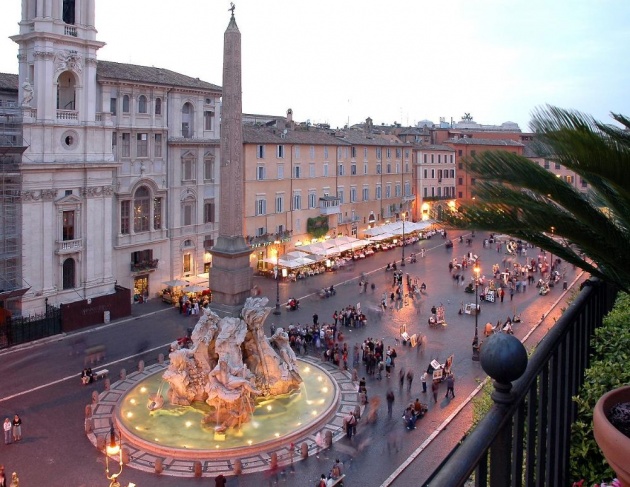
(images source:google.es)
Castel Sant'Angelo - Sant'Angelo castel :-
The castle on the was built in the second century as a mausoleum for Emperor Hadrian and continued to be the imperial mausoleum to Emperor Caracalla. During the Middle Ages the building was used as a fortress and was connected to the Vatican by a secret underground passage, used by popes to escape from unwanted visitors in 1527. From the fourteenth century it became a papal residence and in the nineteenth century it was used as a prison, barracks and finally as museum.
Among his most famous prisoners there was Giuseppe Balsamo, the Dominican philosopher Giordano Bruno and Cardinal Giovanni Battista Orsini. The large building now houses art exhibitions temporary, but the real pleasure of a visit to Castel Sant'Angelo is to climb the spiral staircase to the upper terraces, from where you can admire a splendid view of the city and over.
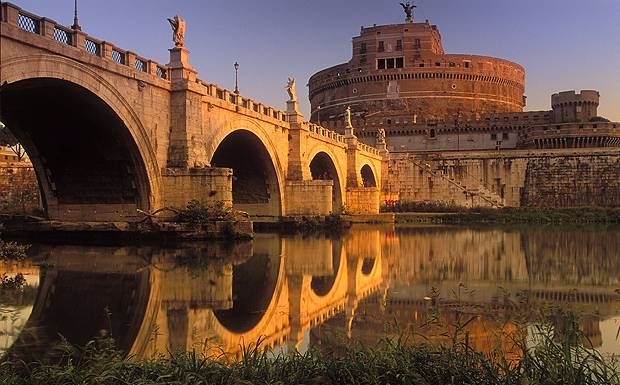

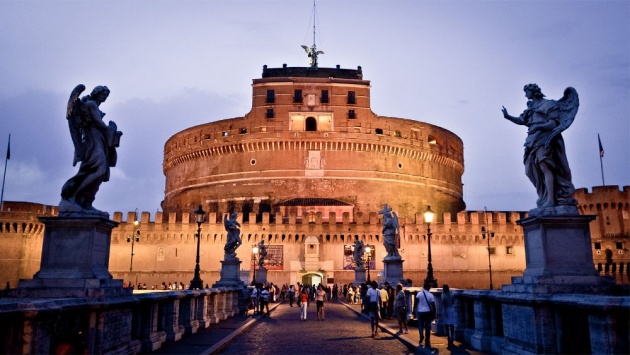
(images source:google.es)
FONTANA DI TREVI - Trevi Fountain :-
The Trevi Fountain is the most monumental and the most famous fountains in Rome. Designed by Nicholas Salvi with a happy mixture of Renaissance classicism and baroque, It is situated on one side of Palace Poli. Its structure is made more impressive and loud by the limited size of the square and the maze of streets that you have to cross to get there.
The sculptures narrate the events related to the discovery of the source from where the water comes to the fountain. At the center of the monument, which takes place on the facade of a building, there is a statue of Ocean, represented on a shell-shaped chariot pulled by winged horses. Among the other sculptures , there are also the figures of tritons and sea animals, real and mythological.
The small square is probably one of the most crowded place that you can find in Rome: thousands of people come every day to admire and to throw a coin in the tank, which as legend says, ensures the stranger's to return to Rome.
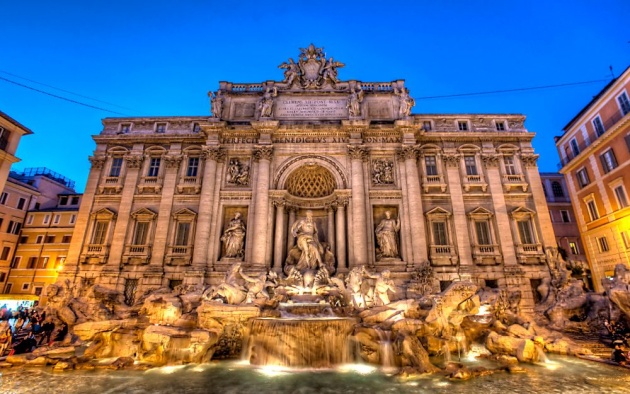
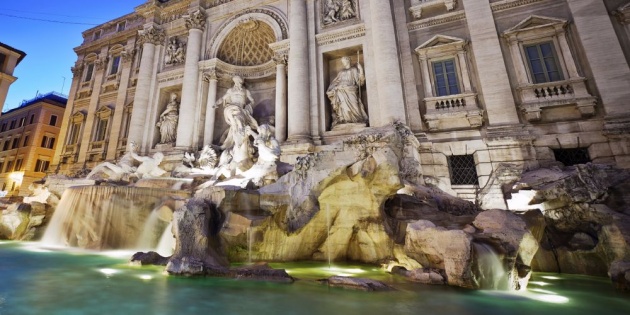
(images sourc: google.es)
Villa e Galleria Borghese - Villa and Gallery Borghese :-
It is one of the most beautiful gardens and extensive of Rome. It is a garden with exotic plants, fountains, classic style statues and is one of Europe's most beautiful baroque gardens. Today, Villa Borghese is renamed 'park of arts' because of art collections on display inside with various Borghese Gallery, Museum Carlo Bilotti, Gallery of Modern Art, Villa Giulia and the House of Cinema. In particular, the former Borghese Gallery, which opened in the seventeenth century by Cardinal Borghese, and also known as Casino Borghese, houses masterpieces by Titian, Bernini, Raphael, Caravaggio, Perugino, Rubens, Veronese and many mores.
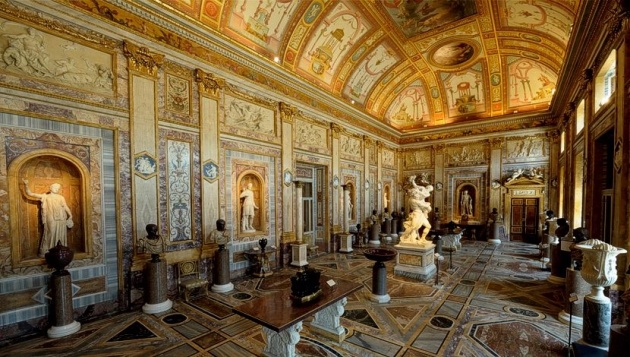
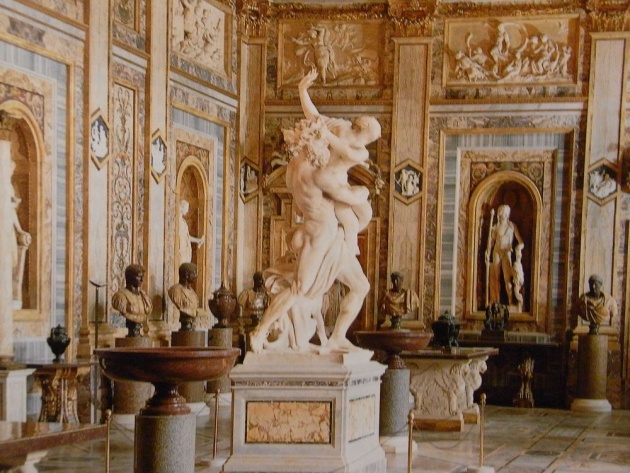
(images source: google.es)
Piazza di Spagna - Square of Spain :-
The square takes its name from the historical presence of the Spanish Embassy. From the church of the Trinity of the mountains, built in the 16th century and restored in the 19, we can enjoy a beautiful view of the city. Next to the church is the garden of the Villa Medici. This palace was built in 1570 by Ammannati, the architect of the florentine Medici family. The Square is an ideal place to start shopping in the streets of downtown. At the end of the stairway is the Barcaccia Fountain designed by Bernini, depicting only two human face who are gushing water. On the steps are always a lot of people sitting, from Via Condotti to the Via Del Corso are many boutiques of the most famous brands of Italian fashion.
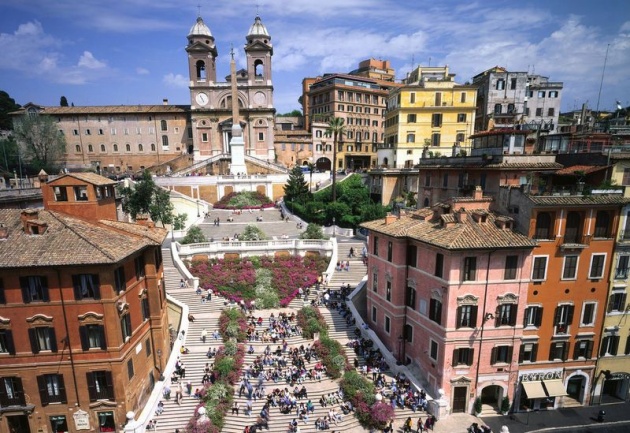

(images source: google.es)
Museo Vaticani e Cappella Sistina - Vatican Museum and Sistine Chapel :-
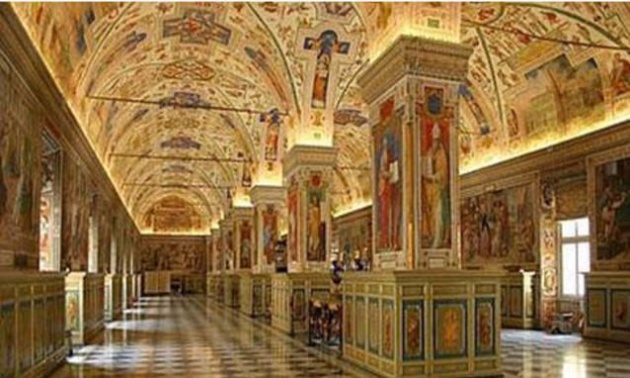
(image source: google.es)
Many people come to Rome only to admire one of the largest art collections in the world. A huge historical and artistic heritage of the ancient era and the Renaissance, enclosed in a labyrinthine series of ornate buildings, including apartments, hallways, galleries, chapels, in a journey that finally comes true jewel of this unusual collection: the Sistine Chapel . The Vatican museums occupy a part of the papal palaces built in the thirteenth century.
At the end, I will add some more videos for you guys so you can know more about Rome and find some interesting places to visit.
This video is for Rome's aerial view. (video source: youtube.com) :-
Here is another video for Panoramic view of the city.(source: youtube.com) :-
In this video you will see about 10 best places in Rome for the tourists. (source: youtube.com) :-
I hope you like my post and find it interesting to read. Thanks for reading and you can also read my other blogs Here. Goodbye!

